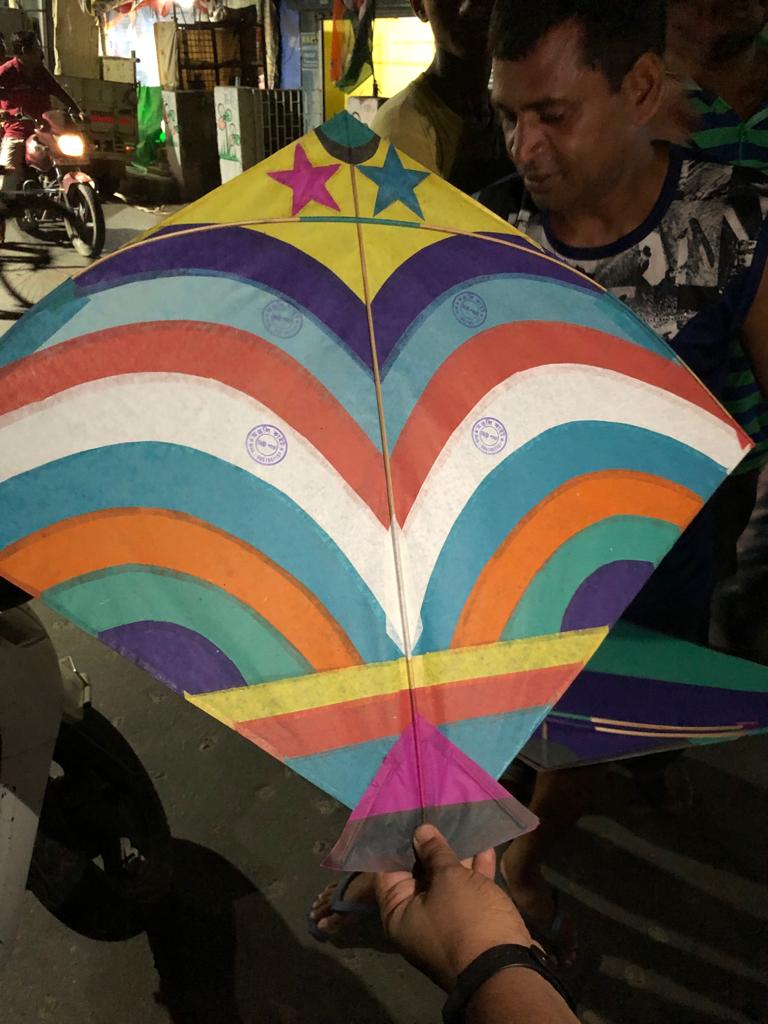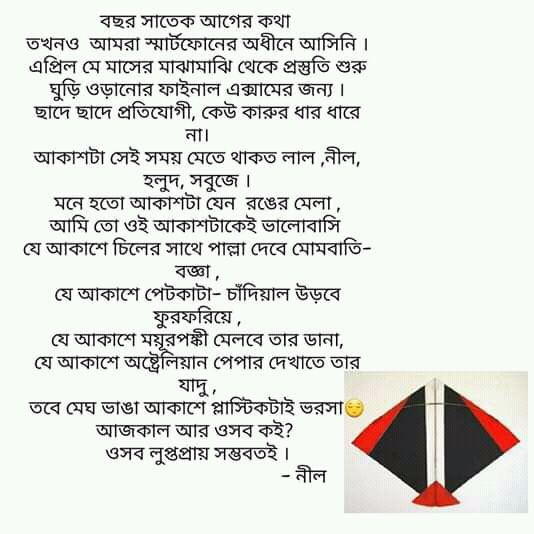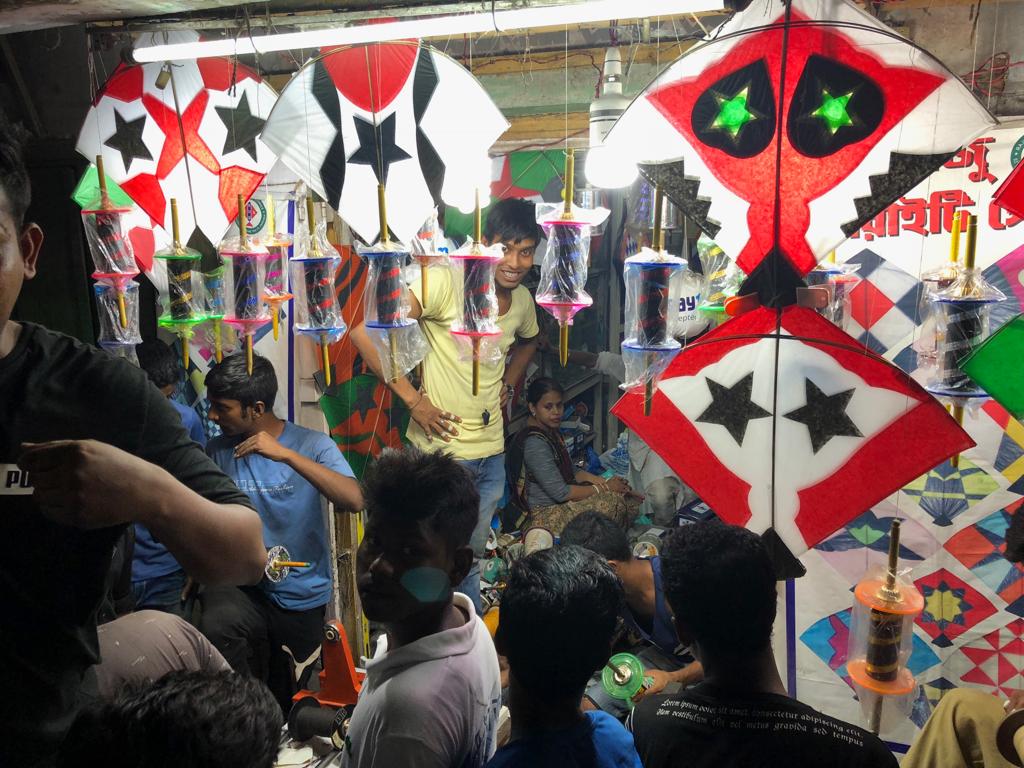“……. Let’s go fly a kite
Up to the highest height
Let’s go fly a kite and send it soaring
Up through the atmosphere
Up where the air is clear
Oh, let’s go fly a kite!”
(A song from the Mary Poppins Movie)
There was a time when the terraces of Kolkata houses used to cry out ‘Bhokatta’ and the air above would reverberate with the same the entire day, – the day of Vishwakarma Puja, every September. Lord Vishwakarma, hailed as the God of Industry and Technology in Hindu Mythology, is also popularly believed to carry a kite in one of his four hands, signifying the pursuit of kite flying on the day of Vishwakarma Puja.

Since when did kite flying became popular in Kolkata and other parts of Bengal is not known precisely. But many believe that the game was introduced and influenced by the Chinese traders travelling regularly to Bengal with their merchandise. Maybe an early Chinese trader and a kite enthusiast brought the kite papers and the know-how with him to teach the art of making kites and flying them in Bengal.
Whatever it might be, in the earlier era, the Kolkata sky witnessed a large variety of kites flown to their utmost glory. They were namely – Petkati, Chaandiyal, Mombati, Bogga, Mukhpora, Bheriyal, Bolmar, Chaprash, Half Chaprash and so on. The youth and the old alike beamed with pride if they got the chance to flaunt the kites they owned which were mostly collected through running for kites after they were snatched off from the sky by the other kites armed with sharper ‘manjas’ or ‘manjhas’ (the thread with which the kites were/are flown).
During my childhood, we remember sitting in the sunny terraces of our quarters on winter afternoons admiring the maanjha making prowess of my neighbourhood Dadas. They used to meticulously sharpen the kite-holding threads with shards of glass all along the afternoons after coming back home from their respective schools and colleges.
The joy of flying kites was always complemented with the pleasure of running kites. Each of the activities would remain incomplete otherwise. We also remember running to collect the fallen kites quite a few times or seeing other neighbourhood kids racing for them as well. The kite flyers used to laud the kite runners if they managed to collect unique kites in one piece, which was quite a rare feat to achieve in those days.
Sadly, modern gadgets have spread their webs in such a way that only a handful of millennial kids participate or know about the sport of kite flying. Yet, the September sky in Kolkata still gets colourfully dotted by a few kites, albeit occasionally. A few kids still feel that they have got own sets of wings as their kites soar in the air above their houses. But, no one cries ‘Bhokatta’ now as loud as before! With time, the silence also has become golden across the old serpentine lanes of Kolkata.

Bochor saatek ager katha
Tokhono amra smartphone er odhine ashini.
April May masher majhamajhi theke prostuti shuru
Ghuri oranor final exam er jonnyo.
Chhade chhade protijogi, keu karur dhar dharena.
Aakashta sei shomoy mete thakto laal, nil, holud, shobuje
Mone hoto aakashta jeno ronger mela.
Aami to oi aakashtakei bhalobashi
Je aakashe chil er sathe palla debe mombati, bogga,
Je aakashe petkata, chaandiyal urbe forforiye,
Je aakashe moyurponkhi melbe tar daana,
Je aakashe Austrailian paper dekhabe taar jadu
Tobe megh bhanga aakashe plastic i bhorsha
Aajkal ar oshob koi?
Oshob luptopray shombhobotoi……

(The poem is an ode to the erstwhile kites of Kolkata by a millennial kid, Niladri Das. It depicts the fair of flying colours during the September month, the preparation of which started from the months of April and May.)
Would you like to read about another forgotten pastime event of the Bengalis, the Dashavataar Taash?


